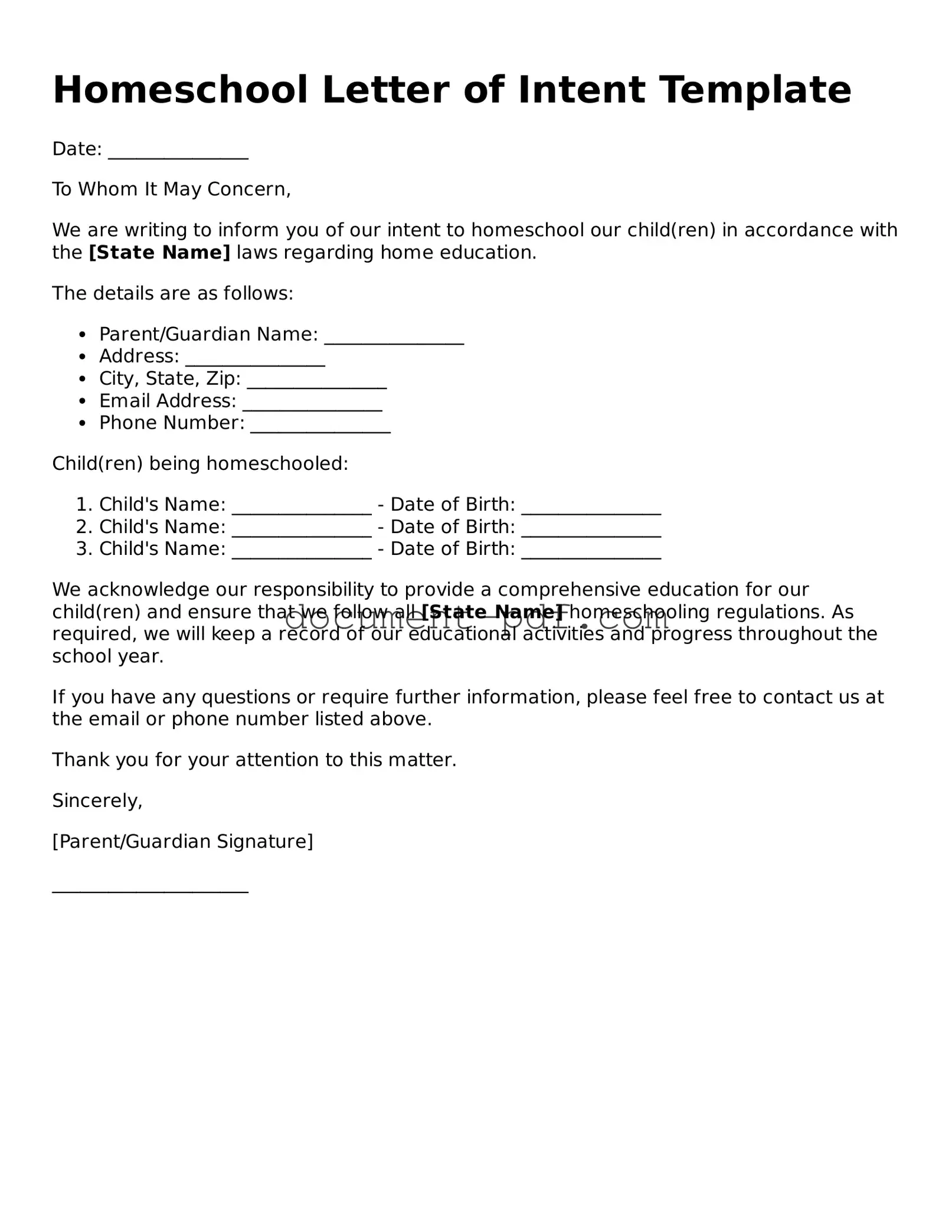Homeschool Letter of Intent Template
Date: _______________
To Whom It May Concern,
We are writing to inform you of our intent to homeschool our child(ren) in accordance with the [State Name] laws regarding home education.
The details are as follows:
- Parent/Guardian Name: _______________
- Address: _______________
- City, State, Zip: _______________
- Email Address: _______________
- Phone Number: _______________
Child(ren) being homeschooled:
- Child's Name: _______________ - Date of Birth: _______________
- Child's Name: _______________ - Date of Birth: _______________
- Child's Name: _______________ - Date of Birth: _______________
We acknowledge our responsibility to provide a comprehensive education for our child(ren) and ensure that we follow all [State Name] homeschooling regulations. As required, we will keep a record of our educational activities and progress throughout the school year.
If you have any questions or require further information, please feel free to contact us at the email or phone number listed above.
Thank you for your attention to this matter.
Sincerely,
[Parent/Guardian Signature]
_____________________
